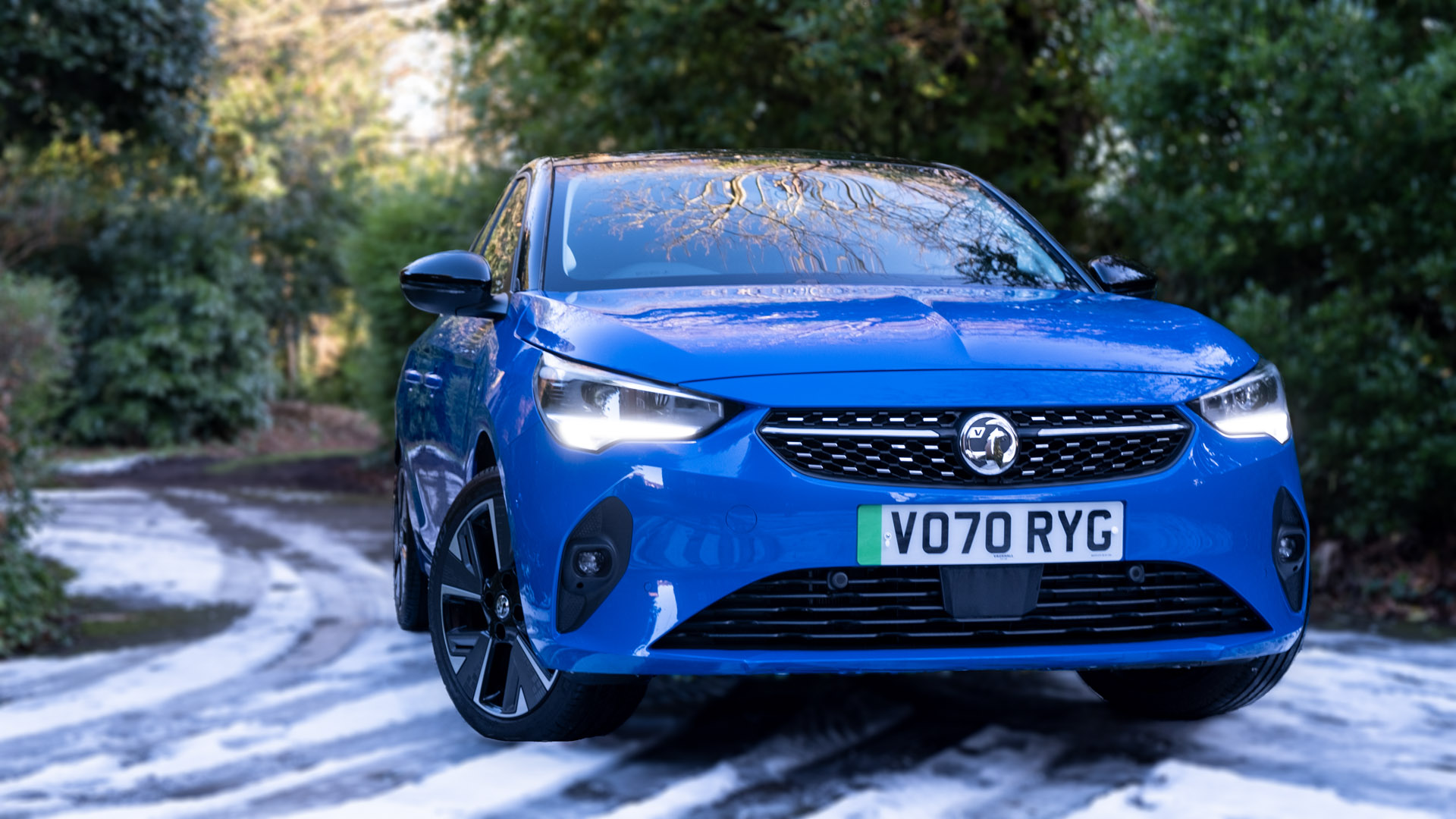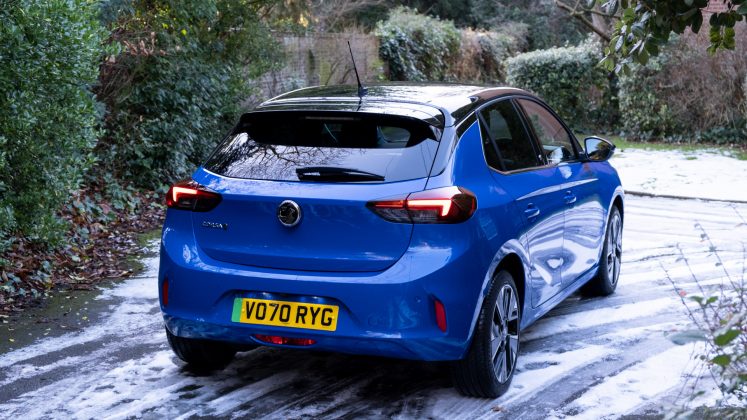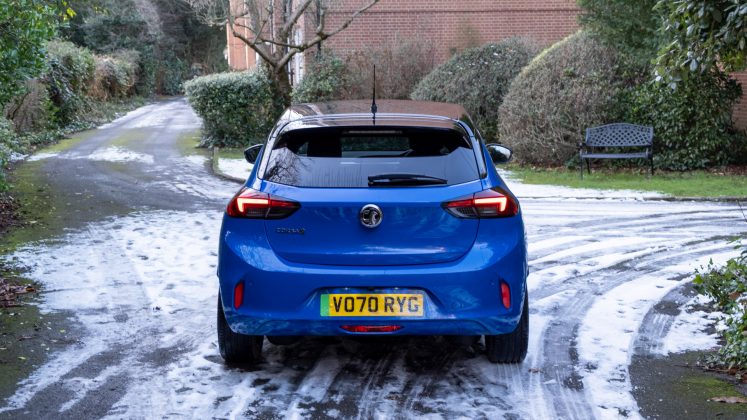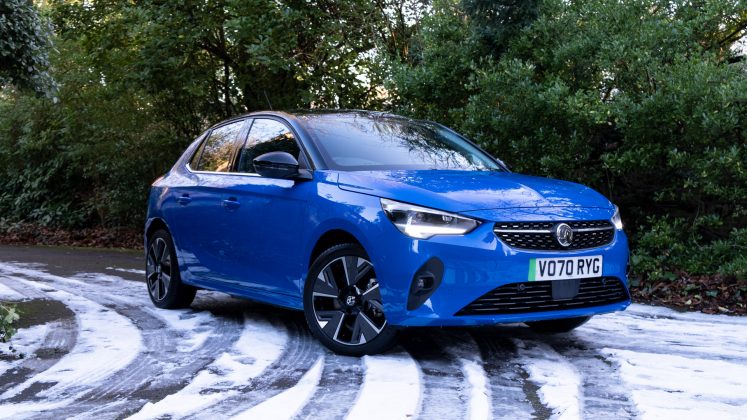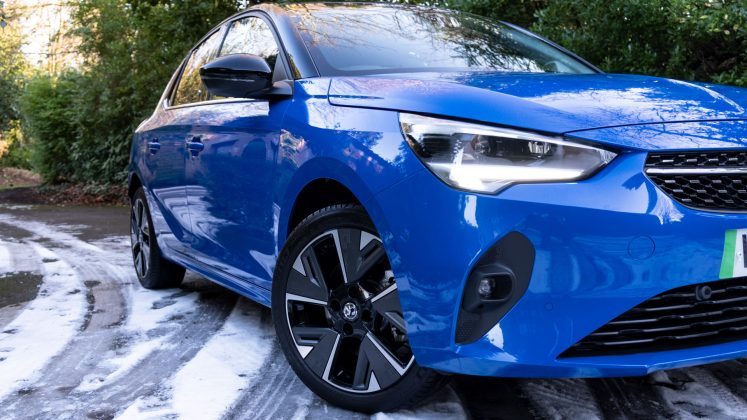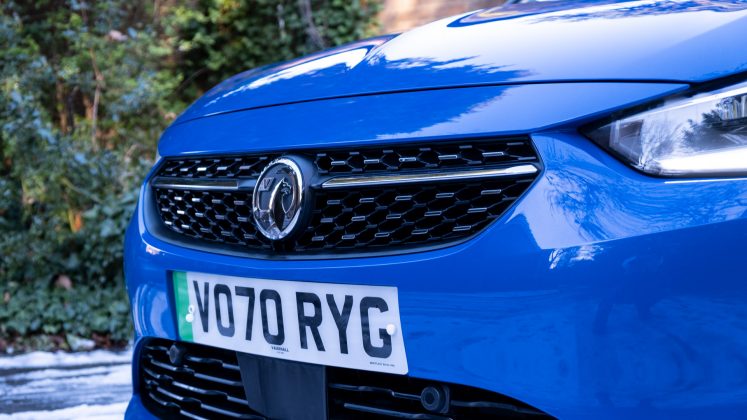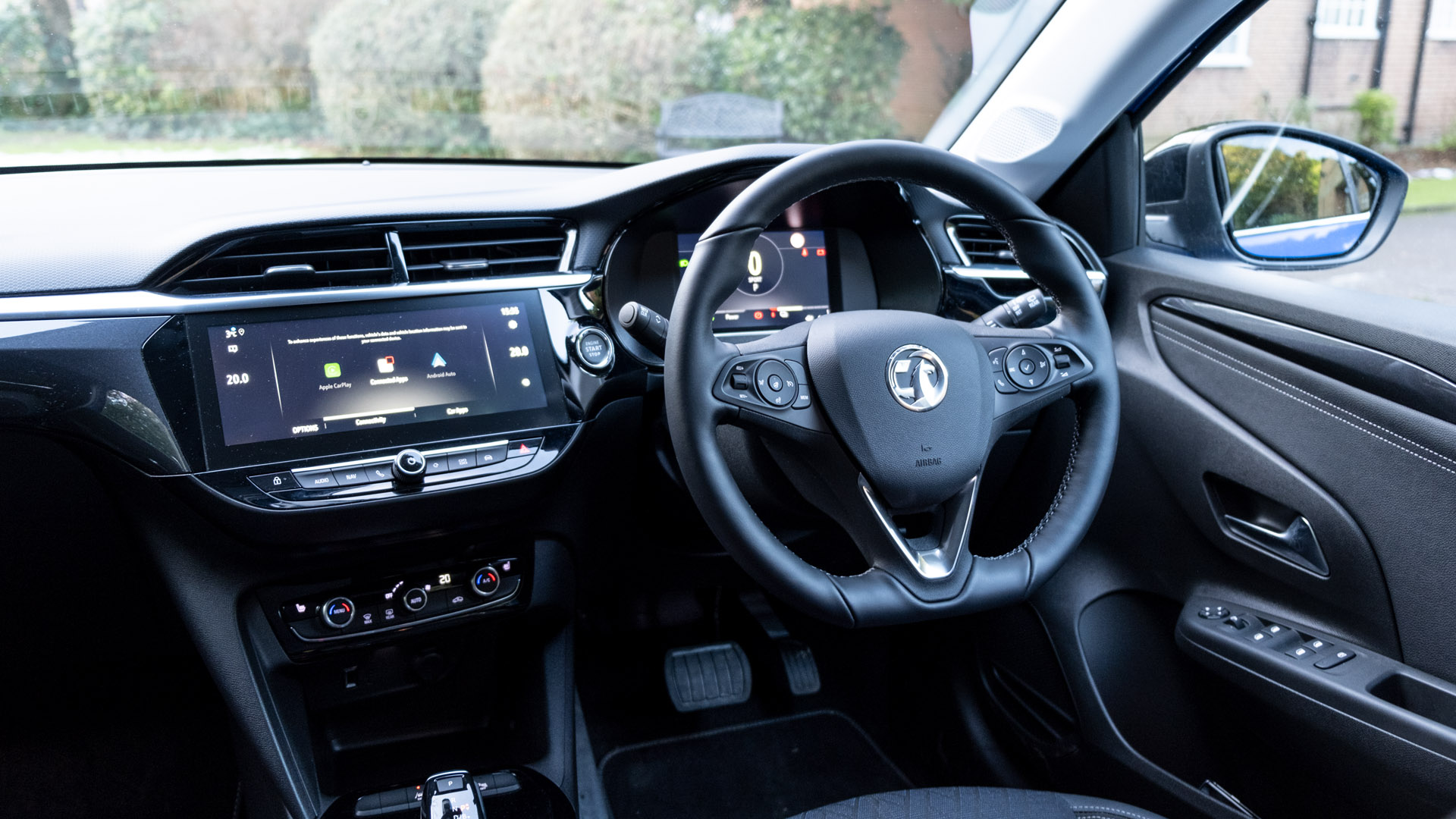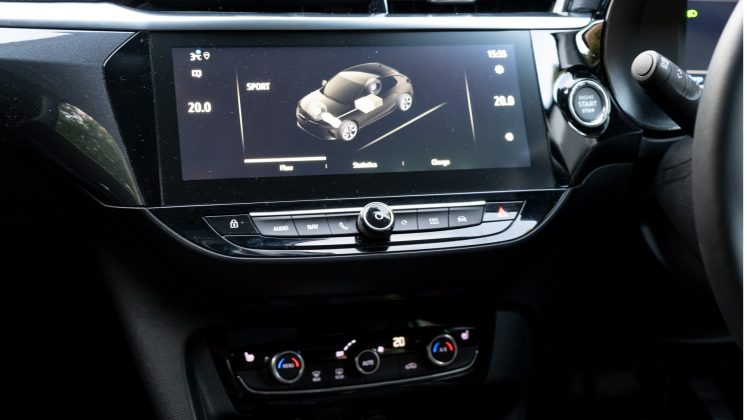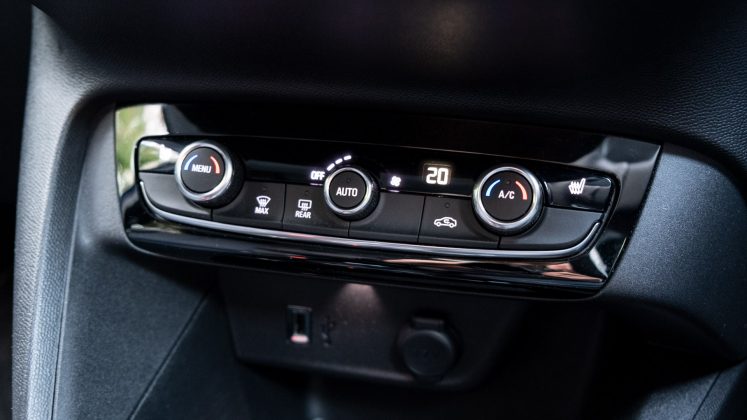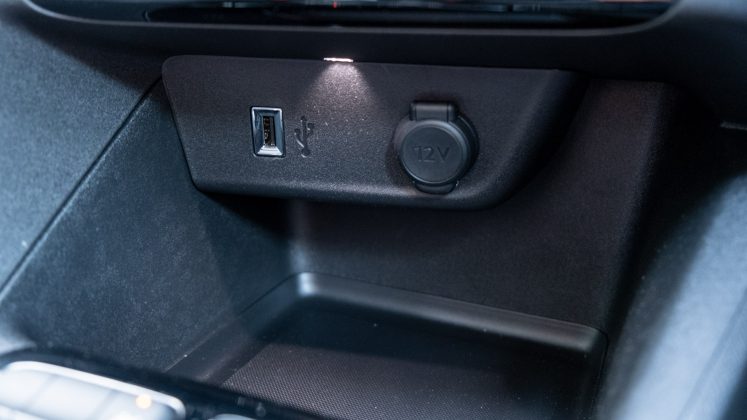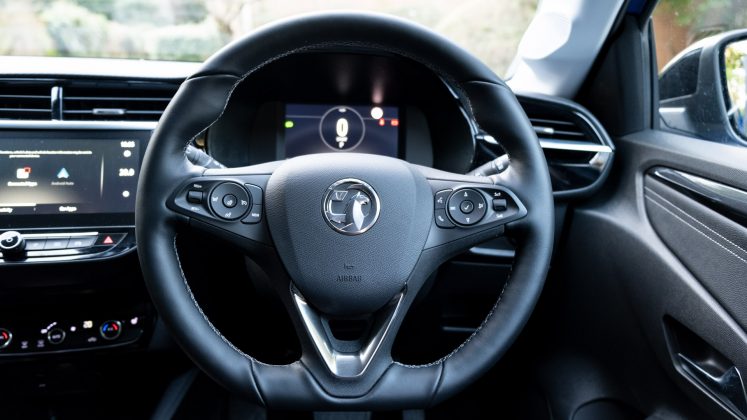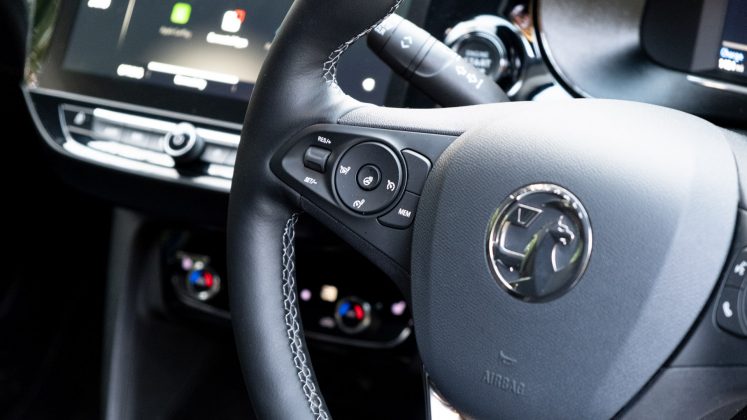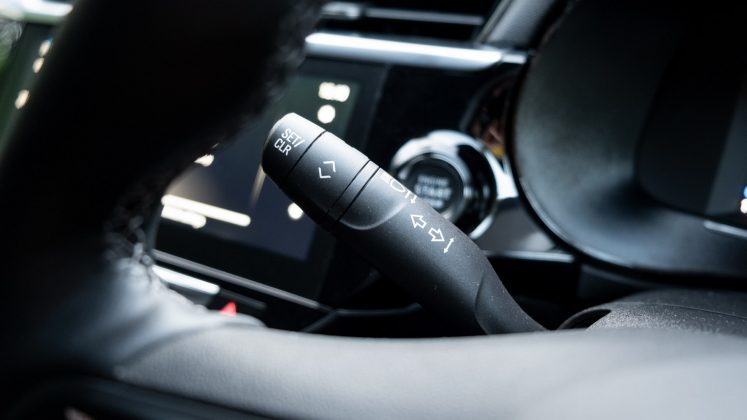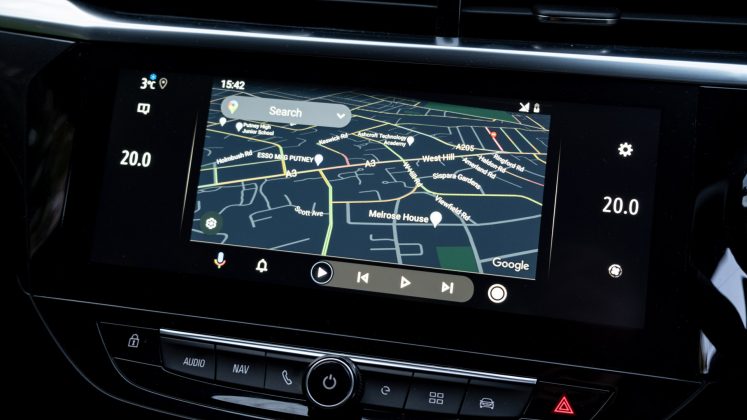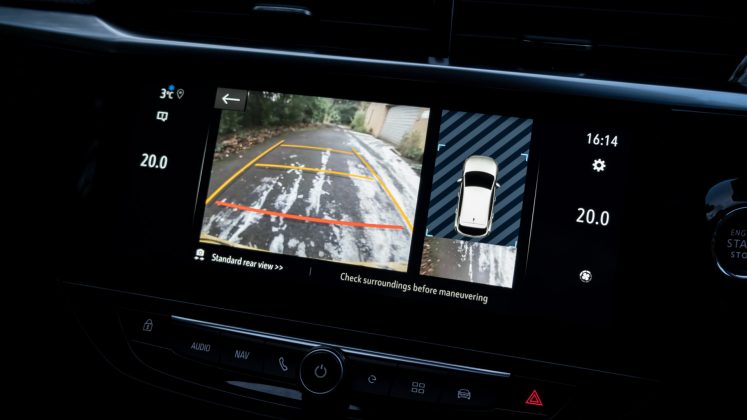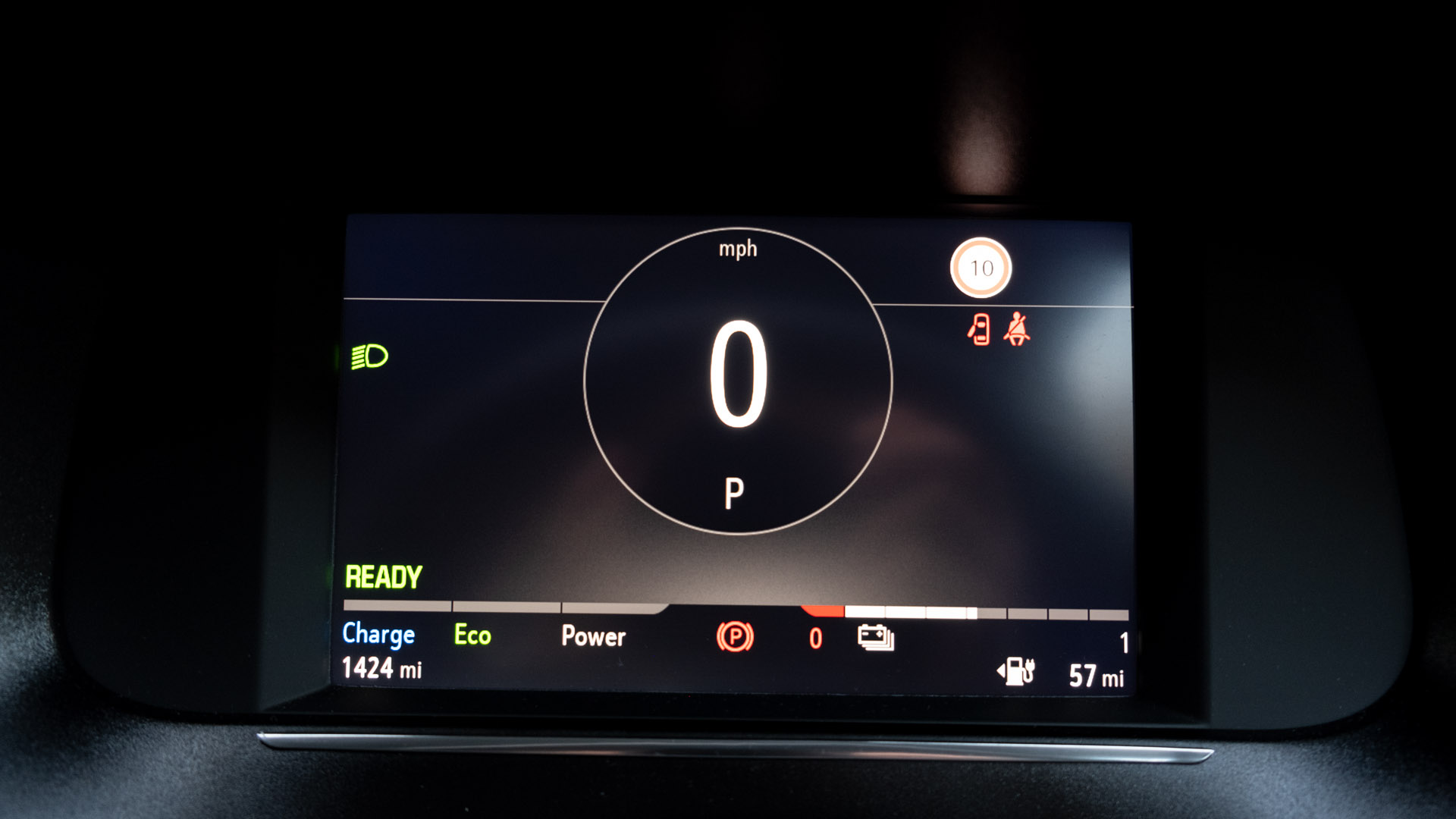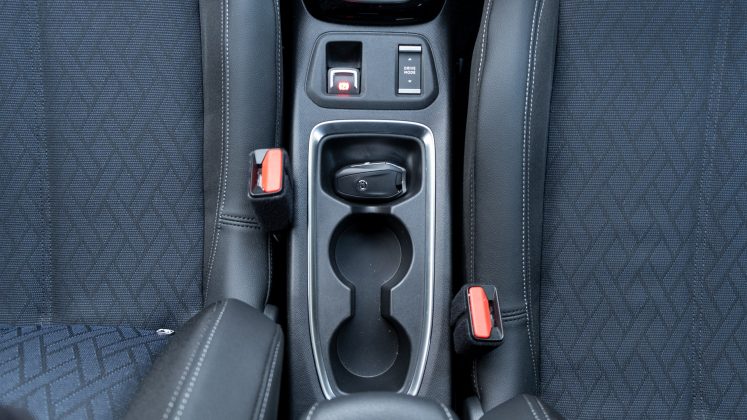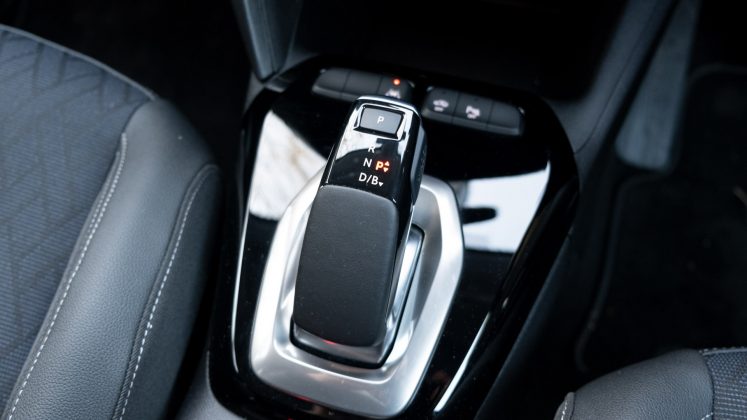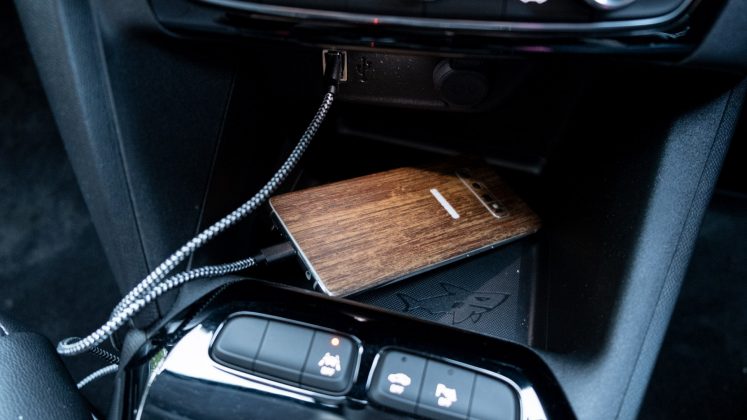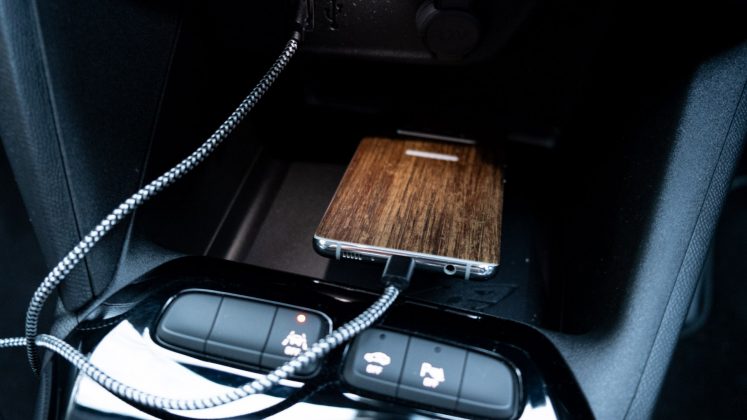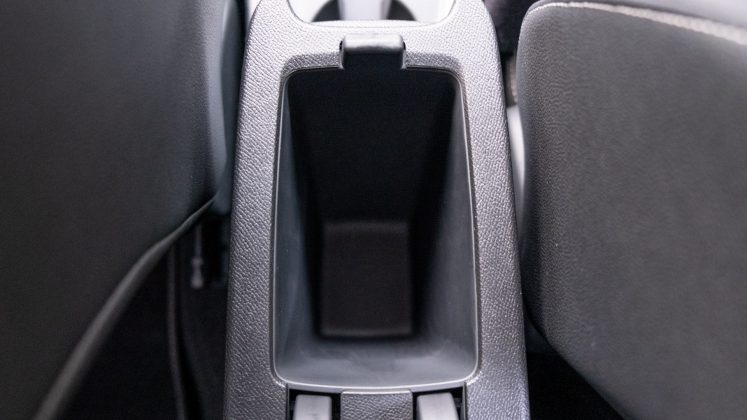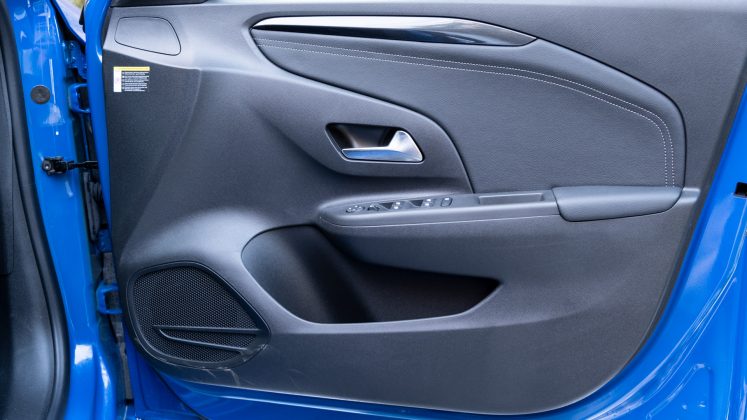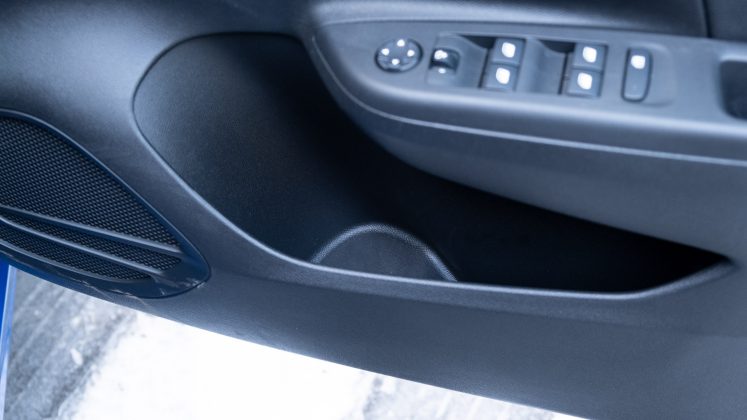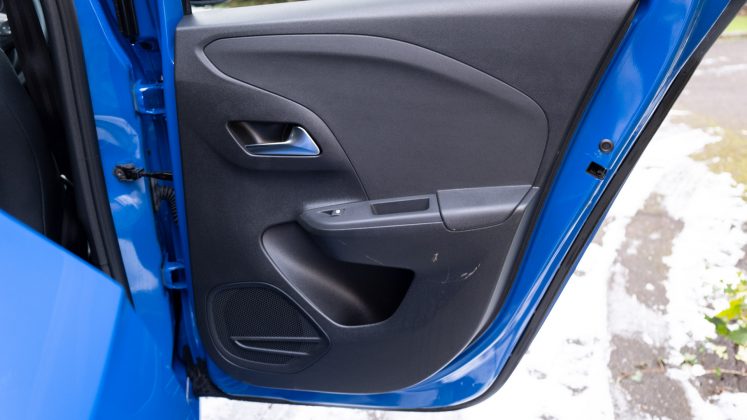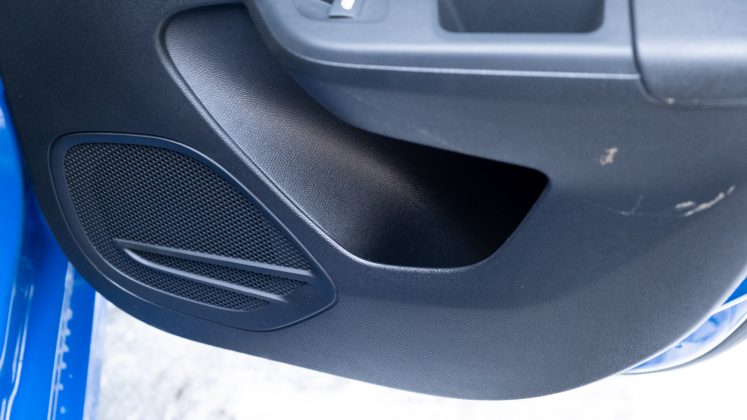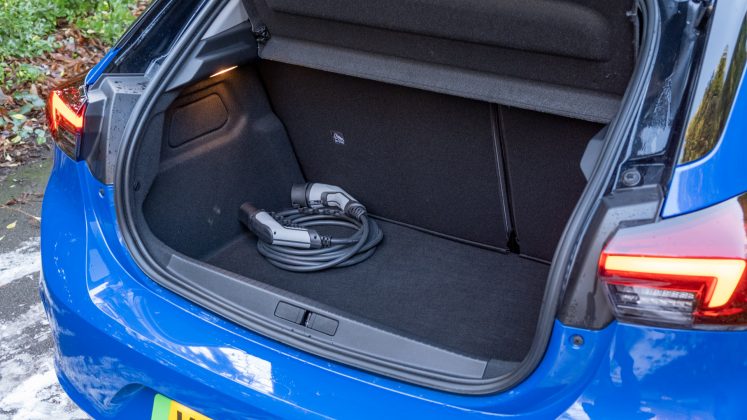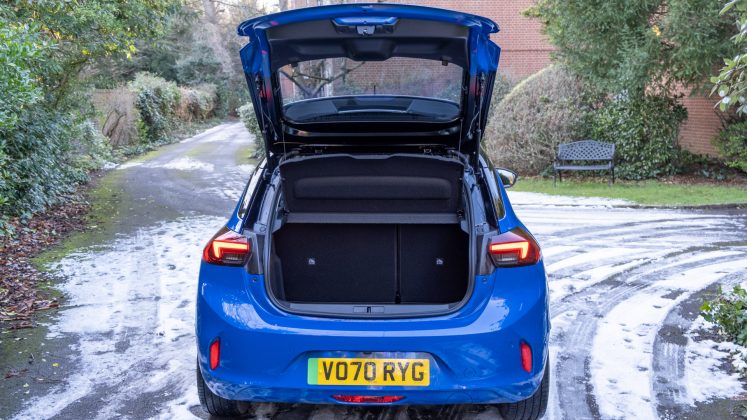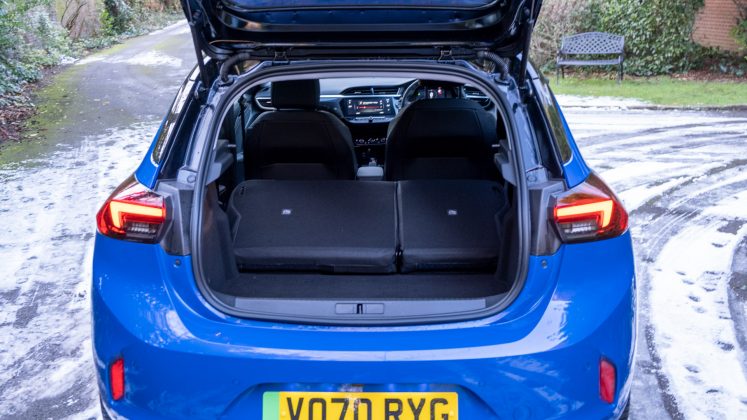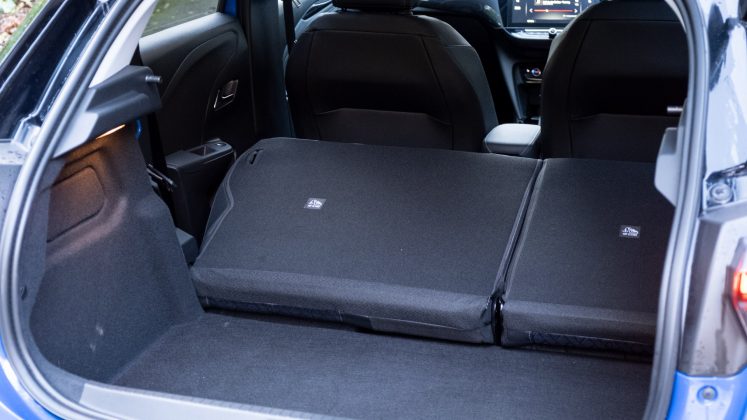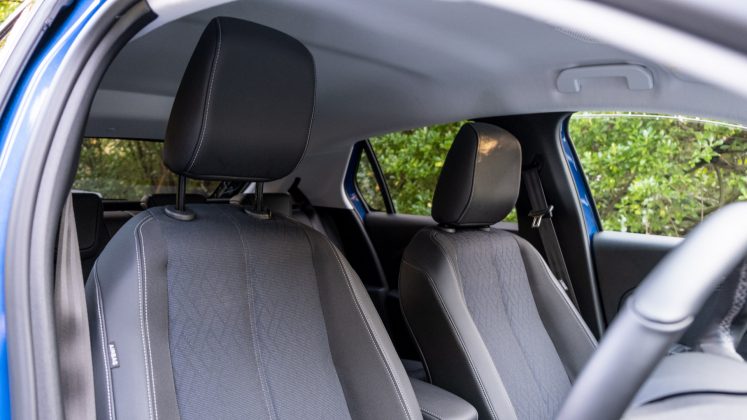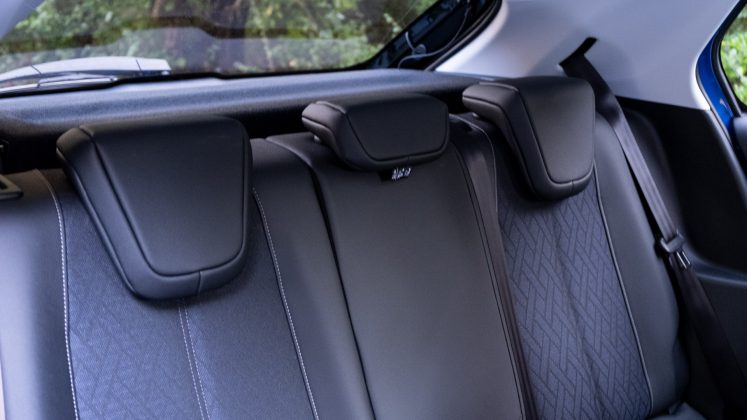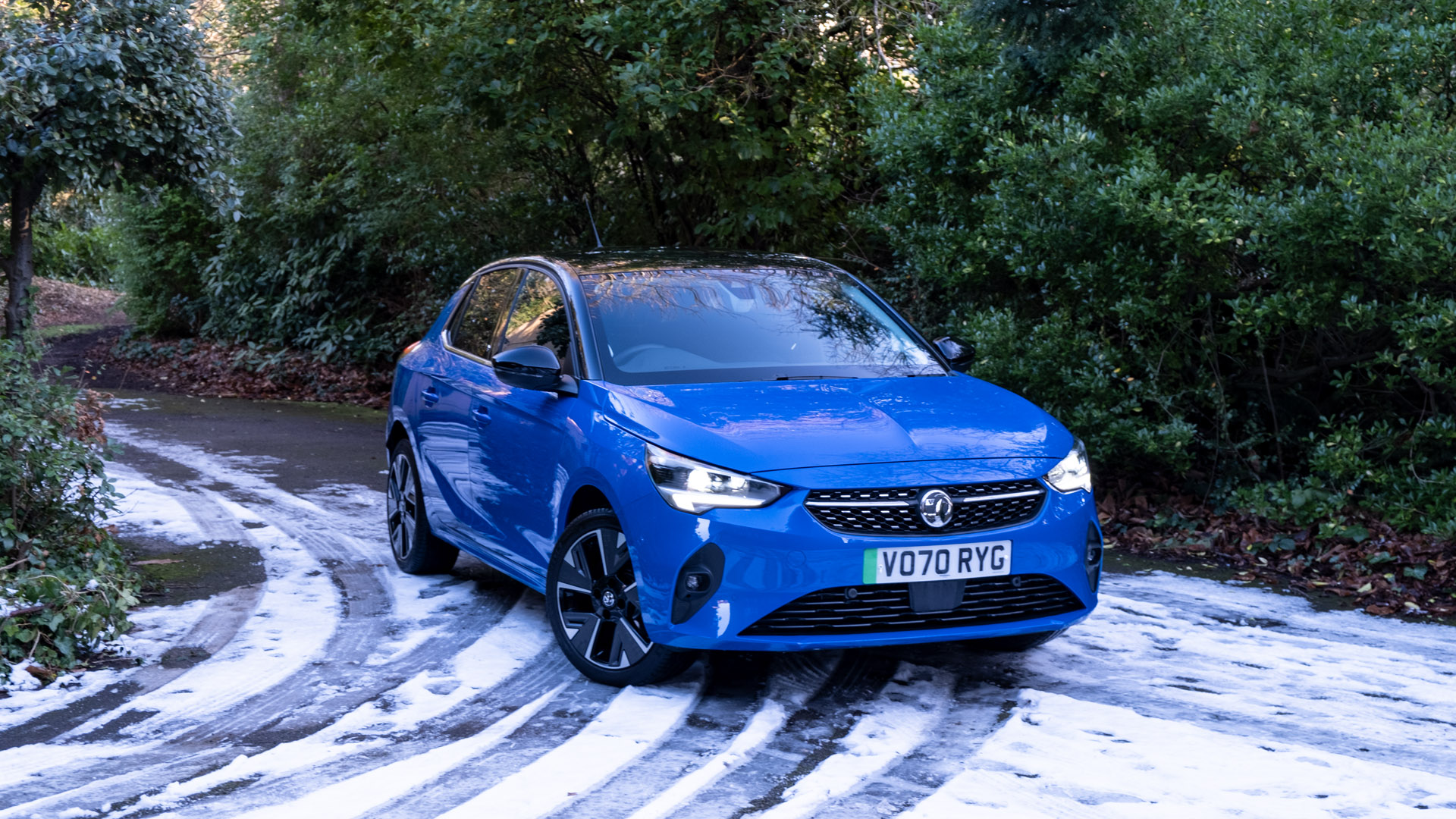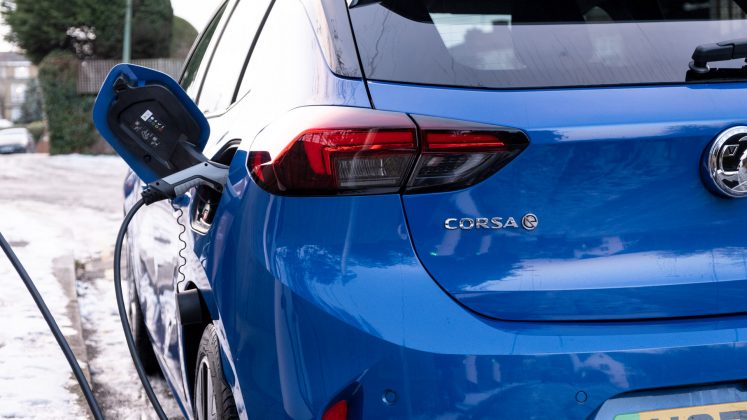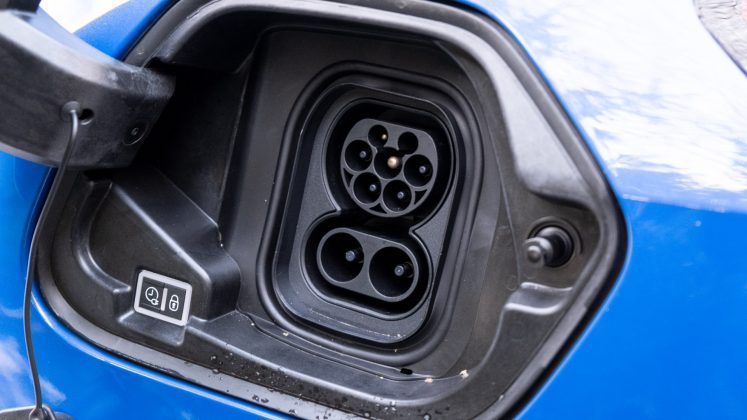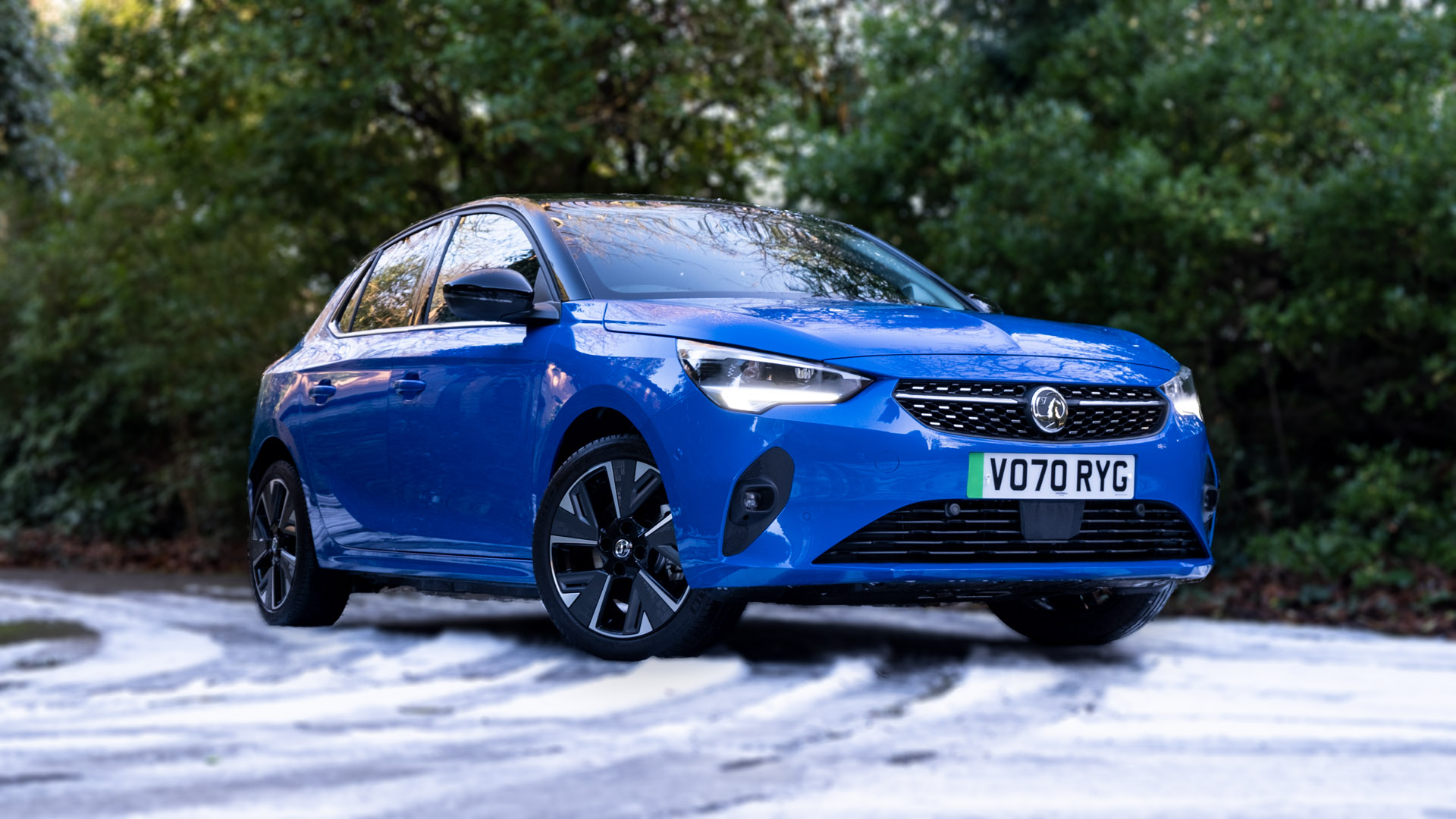The Vauxhall (or Opel) Corsa has been around since the 1980s, where it became the most popular supermini in Britain in the early 2000s – it was an affordable and easy car to drive, making it ideal for both new and experienced drivers.
Now in its sixth generation, the five-door hatchback has a completely revamped design and it’s no surprise given it’s the first vehicle that was developed under Groupe PSA’s ownership. The French automaker acquired Vauxhall/Opel from General Motors in 2017.
With a drive to electrify all of its fleet by 2025, the manufacturer is on an offensive to update its vehicles. Here, the Corsa-e is effectively a fully electric variant of its gasoline counterpart.
If you’d prefer to watch a review of the Vauxhall Corsa-e, head on over to our YouTube channel.
Vauxhall Corsa-e price & competition
The difference, however, is that the electric variant is around 38% more expensive than the cheapest ICE model. Indeed, the Corsa-e SE Nav Premium starts from £26,640, including the government plug-in grant. As standard it comes with:
- 100 kW (134 hp) of power with 260 Nm of torque
- 50 kWh lithium-ion battery with a claimed 209-mile range on the WLTP cycle
- 7″ colour touchscreen with Apple CarPlay and Android Auto
- 7″ digital instrument cluster
- Six speaker audio system
- 16″ alloy wheels
- Lane departure warning with lane assist
- Cruise control with speed limiter
- Rear parking sensors
Move up to the Sri Nav Premium at £27,890 and you get the following options added on top:
- 17″ alloy wheels
- Black roof and dark-tinted rear windows
- Sports-style front seats
- LED taillights
- Front and rear sports body styling
Find the best Vauxhall Corsa-e deals
The top-spec Elite Nav Premium, on review, will set you back £30,045 – this trim adds:
- IntelliLux LED Matrix headlights
- Electrically folding door mirrors
- Front and rear parking distance sensors
- Panoramic rear-view camera
- Keyless entry and start
- 10″ colour touchscreen with satellite navigation
- Heated front seats
- Heated steering wheel
- Front passenger’s seat height adjuster
- Centre armrest with storage
- Fabric/premium leather-effect seat trim
When it comes to its all-electric competitors, there are a few to consider: the sporty BMW i3 from £39,690; the Hyundai Ioniq Electric starts from £30,950; the spacious Renault Zoe starts from £26,995; the comfy Nissan Leaf at £26,845; the tech-focused Honda e at £26,660; the stylish Mini Electric at £24,900; the bite-sized Volkswagen e-up! starts from £20,555 with its near-identical sibling, the Seat Mii Electric, coming in at £19,800; and the cheapest and most compact EV on the market, the Smart fortwo coupé, will set you back £17,550.
Read next: Volkswagen e-up! review: A bite-sized electric car
Vauxhall Corsa-e exterior review
From the exterior, the Corsa-e is pleasing to the eyes. While it won’t stand out like the Honda e, it’s certainly got a more grown-up feel to it versus its predecessors. At the front, it has a slightly aggressive design, from its flared bonnet to the accentuated headlights.
With its side profile, the Vauxhall comes with 16″ alloys as standard. Opt for the 17″ alloys instead and you’ll find the vehicle has a sportier look. There are also no plastic inserts along the wheel arches or side skirts, which further improve the vehicle’s aesthetics.
Around the back, the sixth-generation Corsa has a more familiar design, with stylish L-shaped taillights and a full body-coloured finish that stretches around the rear bumper.
As for the colour, it comes in Navy Blue as standard. The pictured Voltaic Blue is a £550 option, likewise, if you want it in Diamond Black or Quartz Grey option. Hot Red and Power Orange are the two premium options at £650, while Jade White is the cheapest colour option at £320.
Read next: Mini Electric review: Style over substance?
Vauxhall Corsa-e interior review
Moving inside the cabin, the Corsa-e has a very familiar design. It’s not outlandish like some of its competitors but nor is it inspiring. In some ways, it’s similar to the Nissan Leaf – Groupe PSA seems to have played it safe and for some, it’ll be a relief.
Speaking to one owner, TotallyEV learned that the familiar style of the Corsa-e to other ICE-powered vehicles is what enticed her to buy the EV over some of its rivals. Its layout is easy to get used to, especially if you’ve spent decades behind the wheel of a petrol or diesel-powered vehicle.
Indeed, while it’s not snazzy, the Vauxhall’s interior design is very functional. The easy-to-grip steering wheel has cruise control buttons on the left, and media controls to the right. We did, however, find the placement of the two levers behind the steering wheel (indicator and wiper) to be oddly positioned – both are a little higher than we’d expect and are diagonally lodged within the vehicle’s steering column.
At the centre of the dashboard, there are physical buttons that interact with the infotainment system; the row of buttons under this are dedicated to climate controls. The same could be said about the gear lever, which is easy to operate and grip. The Vauxhall’s e-parking brake and drive mode buttons reside here, too.
Onto the vehicle’s interior tech, you’ll find a 7″ infotainment display mounted at the centre of the dashboard. In the Elite Nav Premium, on review, there’s a 10″ touchscreen display, instead. Here, the ability to access different sections of the infotainment system is made easy thanks to the addition of physical buttons, however, the menu system isn’t as well-thought-out.
It’s also disappointing to find that the screen’s usable area is limited, whereby two black sidebars are dedicated to showing the same information: the temperature of the cabin and access to the system’s global settings. This might not pose an issue if you’re listening to the radio but does shrink the amount of usable space on display: from the rearview camera to the navigation systems, which includes the use of apps such as Google Maps that can be found on Android Auto and Apple Car Play.
Speaking of which, connectivity seems to be hit and miss, too. We often found that Android Auto had issues playing back media from our phone when it was connected over USB. The only way to rectify the problem was to switch off the vehicle and reinitiate the connection. Not ideal.
On the plus side, if you wish to connect wirelessly, the system has Bluetooth and further supports the higher-quality AAC codec (most manufacturers at this price point opt for the lower-quality SBC codec, only). As a result, audio playback is bettered through the vehicle’s six-speaker system. If you’d like to hear how it performs, watch our dedicated review of the system on YouTube.
Elsewhere, you’ll find a 7″ digital instrument cluster that cannot be customised; it’ll display your current speed, remaining range, the speed limit and give you a real-time indication of the vehicle’s power draw (Charge, Eco and Power).
Read next: Kia e-Niro review: The best all-electric SUV?
Vauxhall Corsa-e storage review
When it comes to storage, the Corsa-e has a few compartments within the cabin where you can store away valuables. At the top of the centre console, there’s a small non-slip bay to place your smartphone, although, if you have a modern phone (such as the Samsung Galaxy S10+) it won’t sit properly when plugged into the USB socket.
Further down the centre console, you’ll find two cupholder spaces and a small storage compartment within the movable armrest – the latter is only present in the top-spec Elite Nav Premium, which is quite surprising as you’d expect this to be available in the ‘cheapest’ trim, too. Each of the Corsa-e’s four doors has a compartment to store away goods, the front two are larger whereby you can fit a 500ml bottle.
As for boot capacity, the electric variant has a 13% smaller cargo volume over its gasoline sibling. With the seats up the Corsa-e has 267 litres, where the ICE-based model offers 309 litres. The capacity with the seats down, however, remains the same at 1,076 litres. Here, the seats don’t fold flat, where there’s a step between the boot floor and the backside of the rear seats.
In comparison to its competitors, the Vauxhall sits in-between its small-sized and medium-sized rivals – here’s how it stacks up: Nissan Leaf (435/1,161 litres); Hyundai Ioniq Electric (357 /1,417 litres); Renault Zoe (338/1,225 litres); VW e-up! (251/951 litres); Seat Mii Electric (251/923 litres); Mini Electric (211/731); Honda e (171/571 litres); Smart fortwo coupé (260/350 litres).
The biggest annoyance is that the boot doesn’t have anywhere to store the vehicle’s charging cables. There’s no side or underfloor compartment, which means you’ll have to have the cables dangling around or have a separate bag that takes up space.
Read next: MG ZS EV review: An affordable all-electric SUV
Vauxhall Corsa-e comfort review
Onto comfort, the Corsa-e doesn’t have the cushiony soft seats of the Nissan Leaf, but is still pleasant for longer-distance drives. Still, one might expect electronically adjustable seats at this price but alas, Vauxhall has kept the rear three seats fixed and limited the front two to manual adjustments, only.
On the plus side, both legroom and headroom are plentiful at the front and rear of the cabin; 6-foot (182cm) individuals won’t feel henned in. It’s also positive to see that the Corsa-e will seat up to five occupants.
As for cabin noise, there’s a small amount tyre noise that creeps in and a bit of wind noise that can be heard deflecting off the A-pillars when driving at speed, but in the grand scheme of things, it’s minimal.
Read next: Renault Zoe review: Best electric family car?
Vauxhall Corsa-e performance review
Given its long-standing history of being an easy car to drive, it should come as no surprise to know that the Corsa-e follows on from its predecessors.
The steering wheel makes for light work around inner-city commutes, while its suspension has a good balance – it’s neither too soft nor stiff. Here, the five-door hatchback doesn’t suffer from too much body roll when lobbed around corners at speed, and yet, doesn’t have a hardened setup that will make you feel every pothole or speed bump. While it isn’t as well-planted as the Honda e, it still aspires confidence when driven on country roads.
Speaking of which, the Corsa-e has 100 kW (134 hp) of power, where its synchronous electric motor dispatches 260 Nm of torque; top speed is limited to 93 mph. Using Racelogic’s Vbox Sport, we measured a 0-60mph time of 7.91 seconds, a little under Vauxhall’s claim of 7.6 seconds. Nonetheless, the car is nippy and with an instant amount of torque at your disposal, it’s plenty of fun to drive in start-stop scenarios.
Find the best Vauxhall Corsa-e deals
To achieve the best level of responsiveness and have the full amount of torque at your disposal, you’ll need to lob the car in Sport mode. In the other two modes – Normal and Eco – the car doesn’t have the same level of sharpness; namely in the latter mode that attempts to maximise range and energy efficiency.
Ironically, that’s where the car falls short: it’s claimed 209-mile range doesn’t live up to expectation. In TotallyEV’s mixed driving test, the Corsa-e achieves between 130-140 miles, which is roughly the same as what the Hyundai Ioniq Electric (140-150 miles), and the affordable Volkswagen e-Up! (120-140 miles) and Seat Mii Electric (120-140 miles). While these vehicles will outpace the likes of the Mini Electric (100-110 miles) and Honda e (80-90 miles), they’re all no match to the Nissan Leaf and Renault Zoe that both manage to hit the 200-mile mark.
It’s further disheartening to find that the Corsa-e has only one regenerative braking mode – B-mode can be initiated when you shift down on the gear lever. It’ll need to be enabled each time you step inside the vehicle, as unlike some of its competitors, it won’t remember your previously-used mode. Worse still, B-mode does a measly job of bringing the car to a complete standstill; the car cannot be driven consistently using one-pedal and doesn’t brake harshly enough for our liking.
To recharge the car more effectively, you’ll want to access its CCS and Type 2 ports located by the C-pillar on the passenger side. Using a 100 kW rapid charger, the Corsa-e will go from 15-80% in 30 minutes, while a 50 kW input will take 45mins using the CCS input. Plugged into a 7 kW public or home charger, it’ll take 7hrs 30mins to go from empty to full.
It’s also worth knowing that there are two variants per trim of the Corsa-e, where the 7.4 kW variant will take 5hrs from 15-80% on a 22 kW public or workplace charger, while the 11 kW variant will achieve this in 3hrs 20mins.
Buy a car phone mount on Amazon (Affiliate)
As for driver assistance and safety features, there’s no adaptive cruise control, lane positioning assistance, blind spot assist nor rear cross-traffic alert. Instead, you’re limited to cruise control, lane departure warning with lane assist and emergency brake assist. It’s pretty basic.
To also think that you’ll need to spend £30,045 on the Elite Nav Premium in order to get a rearview camera with front and rear parking sensors is also pretty shocking; the £27,890 Sri Nav Premium and £26,640 SE Nav Premium come with rear parking sensors, only.
Read next: Hyundai Kona Electric review: Kia e-Niro alternative?
TotallyEV’s verdict on the Vauxhall Corsa-e
On the whole, the Vauxhall Corsa-e is a bit of a miss-match. While it is elegant from the exterior and is very functional like its predecessors of yesteryear, it’s otherwise an expensive hatchback for what it offers.
It has a basic level of technology and safety systems, has an uninspiring interior design and more importantly, fails to go the distance in comparison to its rivals. Ultimately, the cheaper Volkswagen e-Up! and Seat Mii Electric offer the same amount of range and are similarly basic in their level of interior tech.
Find the best Vauxhall Corsa-e deals
If you want to spend around £30,000, we’d suggest looking into the Nissan Leaf, or even the excellent Renault Zoe, which at the time of writing is our favourite hatchback for the money.
We’d love to hear your thoughts on the Vauxhall Corsa-e. Let us know in the comments section below or via social media; we’re on: YouTube, Instagram, Facebook, Twitter and LinkedIn.

